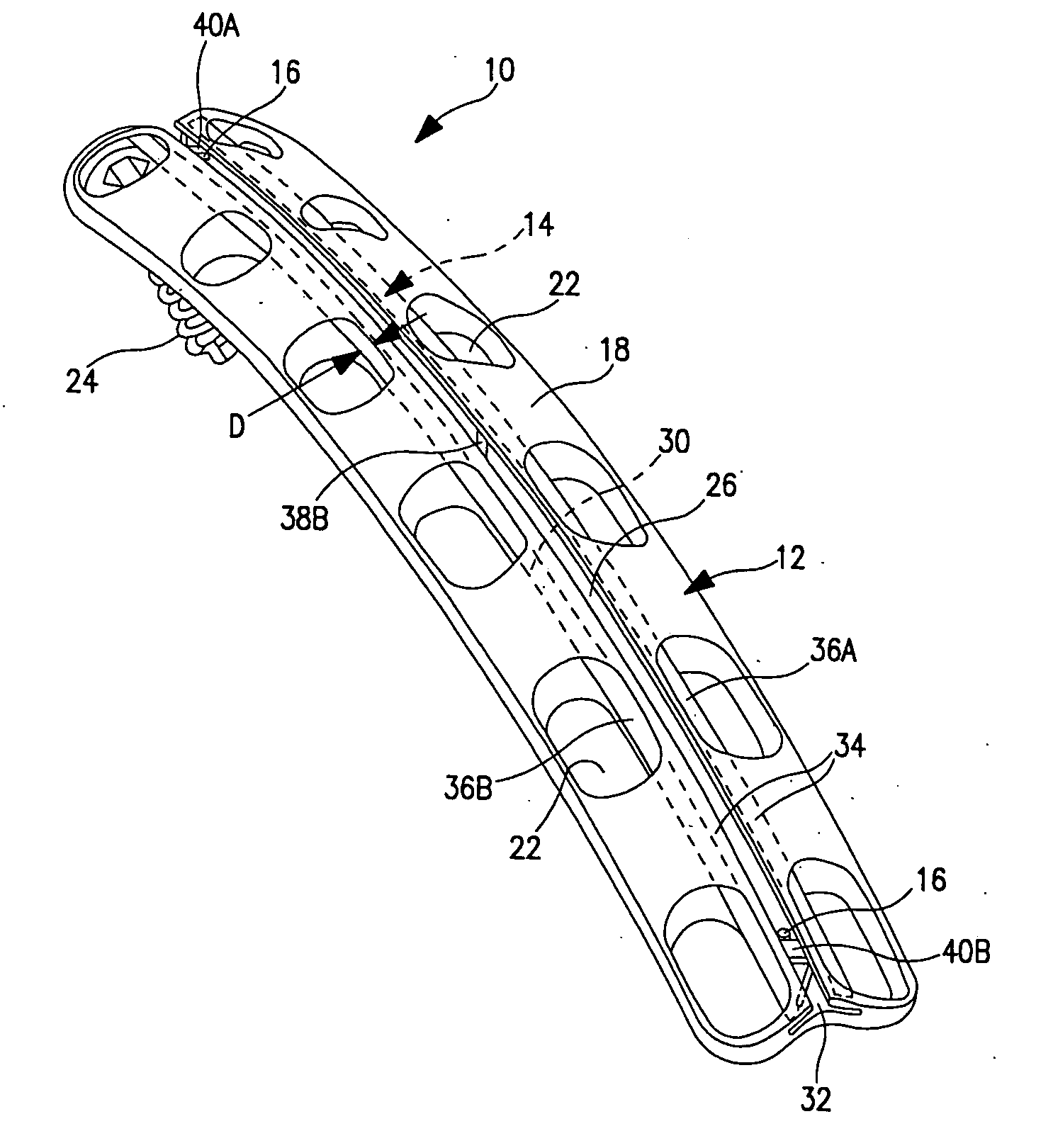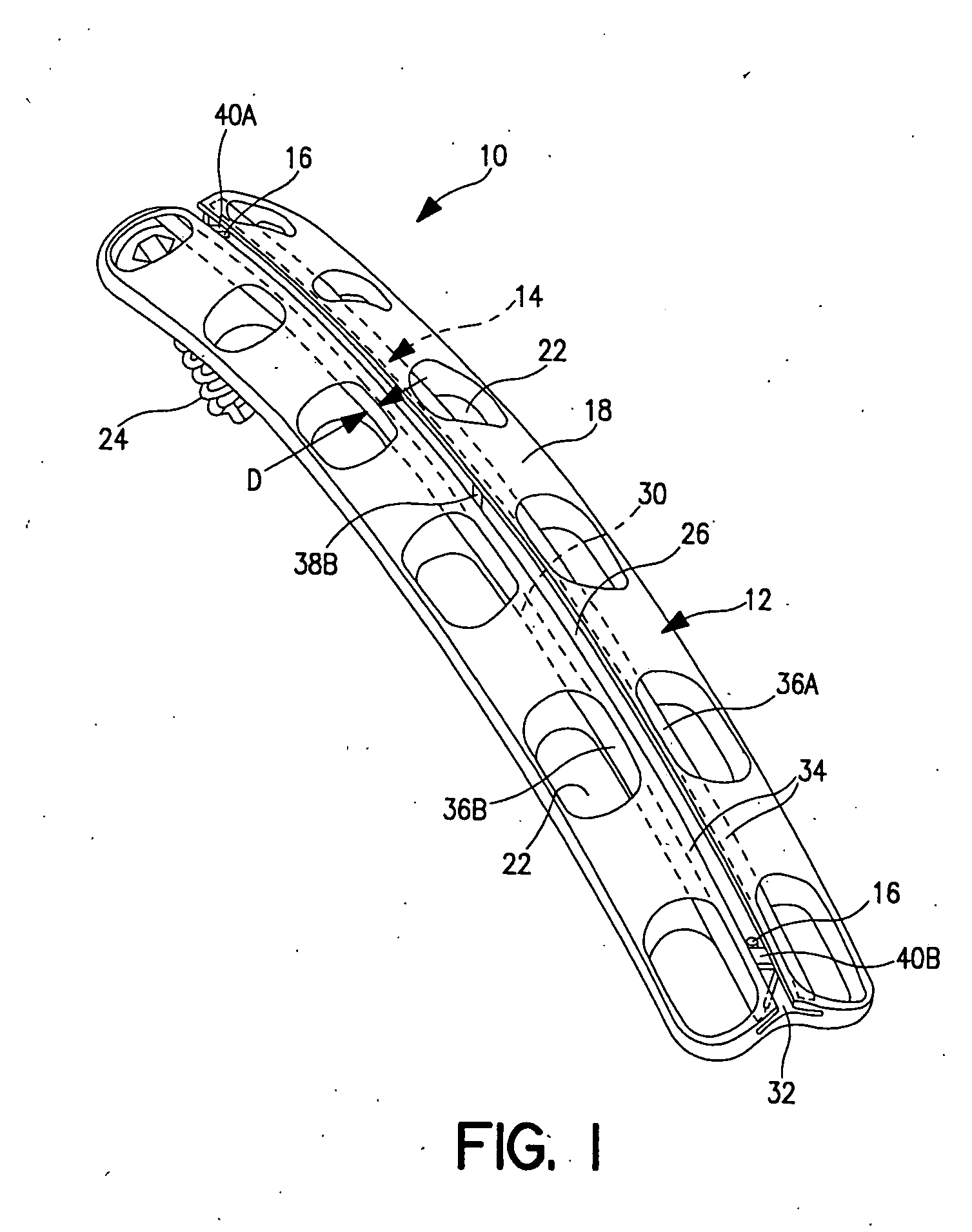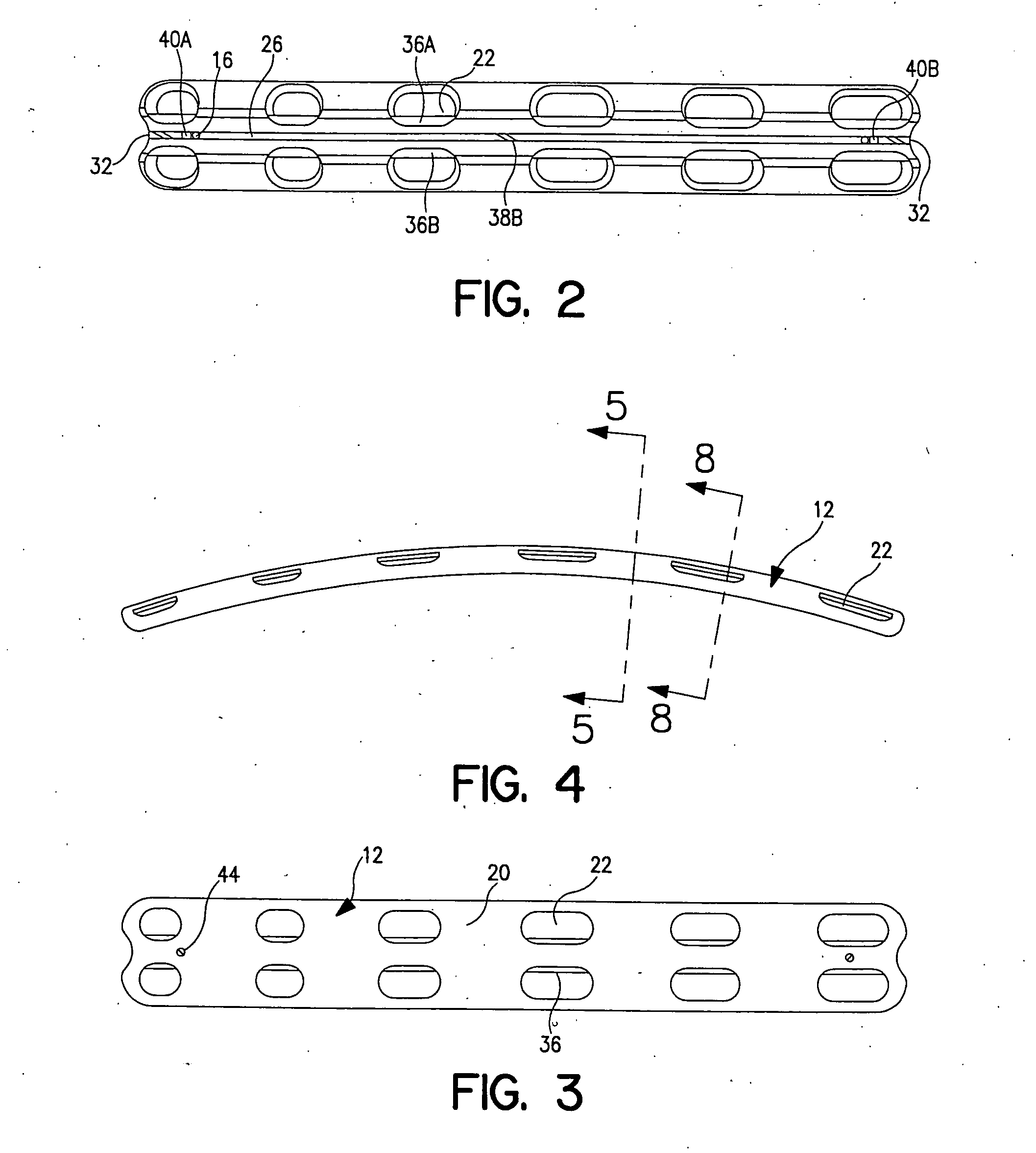Spinal plate assembly
a technology of spinal cord and bone plate, which is applied in the field of spinal cord plate assembly, can solve the problems of design detriment, bone screw retraction, and bone screw retraction, and achieve the effect of reducing the strength of the bone plate, and reducing the risk of fractur
- Summary
- Abstract
- Description
- Claims
- Application Information
AI Technical Summary
Benefits of technology
Problems solved by technology
Method used
Image
Examples
Embodiment Construction
[0059] Referring now to the embodiments represented by FIGS. 1-5, a spinal plate assembly 10 of the invention includes a spinal plate 12, a blocking structure generally represented by 14 in FIG. 1, and one or more retaining structures 16.
[0060] Spinal plate 12 has a top surface 18, a bottom surface 20 adapted to be positioned adjacent bone structure of a recipient user of the spinal plate assembly, and a plurality of bone-fastener-receiving apertures 22 which receive bone fasteners such as bone screws 24. Apertures 22 are arranged in first and second rows of such apertures, along the length of the spinal plate.
[0061] Top surface 18 of the spinal plate defines a channel 26 extending along the length of the spinal plate. Channel 26 has a bottom wall 28, opposing side walls 30, and has openings 32 extending out the respective ends of spinal plate 12, best illustrated in FIG. 5. An opening 32 is also illustrated in FIG. 1. Channel 26 further has overhanging top walls 34 extending inwa...
PUM
 Login to View More
Login to View More Abstract
Description
Claims
Application Information
 Login to View More
Login to View More - R&D
- Intellectual Property
- Life Sciences
- Materials
- Tech Scout
- Unparalleled Data Quality
- Higher Quality Content
- 60% Fewer Hallucinations
Browse by: Latest US Patents, China's latest patents, Technical Efficacy Thesaurus, Application Domain, Technology Topic, Popular Technical Reports.
© 2025 PatSnap. All rights reserved.Legal|Privacy policy|Modern Slavery Act Transparency Statement|Sitemap|About US| Contact US: help@patsnap.com



